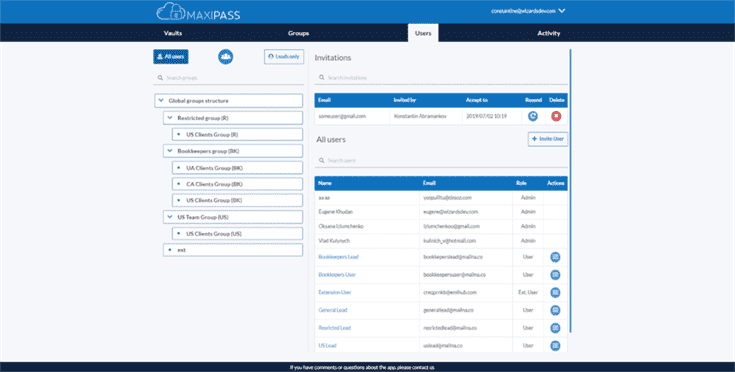Technical debt hinders planning abilities by increasing the amount of unscheduled work as production defects distract the team from further progress. Agile software development requires teams to meet product commitments, which means they should focus on work for only that product. However, team members who appear to have spare capacity are often expected to take on other work, which makes it difficult for them to help complete the work to which their team had committed. A common mistake is to fill the product owner role with someone from the development team.

This method splits a project into stages or “sprints,” allowing it to mature and evolve as you gain more information. To better understand Agile vs. Scrum, you can think of Scrum as a guideline for adopting the Agile approach features of agile methodology to project management. Scrum provides the rules, roles, events, tools, and artifacts necessary for successfully adopting an Agile mindset. The best architectures, requirements, and designs emerge from self-organizing teams.
Scrum
Agile software development was never truly Agile until the organization changed its structure and operations to work in an uncertain environment. At the beginning of the sprint, the product owner decides which task will move from the main list to the sprint to-do list . The development team, led by a Scrum Master who understands the Scrum process, works to complete the sprint backlog in the allocated time. Think of it as a methodology you can apply to any of your business processes for increased collaboration, optimized efficiency, and continuous improvement. The DSDM framework is particularly useful for prioritizing requirements. It also mandates that rework is to be expected, so any development changes must be reversible.

The Dynamic Systems Development Method originated in 1994 to provide an industry-standard framework for product delivery for what was then known as Rapid Application Development . The Crystal family focuses on the realization that each product has unique characteristics, therefore, the policies and practices must be custom-tailored to accommodate these features. The team has a better understanding of what is most important for the client’s business and can deliver features that give the most value to the business. Because the Sprints are on a fixed schedule, the costs are limited and predictable and based on the amount of work done. By combining the estimated costs before each Sprint, the client will better understand the approximate costs of each feature. This offers more improved decision-making opportunities when prioritizing the features or adding iterations.
Iterative, incremental, and evolutionary
Though originally created for software development, the Agile approach is now widely used in executing many different types of projects and in running organizations. Dynamic systems development methodology combines the principles of time-boxing and collaboration with an emphasis on goals and business impact. It lays out distinct phases for tackling projects, from evaluating feasibility to creating prototypes to implementation. DSDM is typically selected by larger organizations and governments with the budget to cover overhead and implementation. Agile organizations aim to amplify the voice of the customer and use it to guide product strategy and execution throughout the development process.
- Almost three-quarters (71%) of organizations report using Agile approaches sometimes, often, or always.
- Now that you have a better understanding of agile 101 basics and the benefits of agile, let’s discuss some of the most popular agile methodologies.
- Continually creating great work allows teams to move faster in the future.
- It focuses on people and the interactions that occur while working on an Agile project as well as business-criticality and priority of the system under development.
- Here, working on a project starts with a customer creating a list of particular features they want to see in a product.
- Waterfall is a more traditional approach to project management, involving a linear project flow.
Each embodies the core principles of frequent iteration, continuous learning, and high quality in its own way. Scrum and XP are favored by software development teams, while kanban is a darling among service-oriented teams like IT or human resources. Agile development method works by dividing the task into small sub-tasks termed as increments and builds the project’s ultimate deliverables in small increments by repeating basic steps over and over. It requires less planning during the development process, it mainly works for short term projects, the team efforts make a project successful. The agile development process is lightweight and provides incremental and continuous delivery.
Jira Software
Agile project estimating helps both scrum and kanban teams understand their capacity. And backlog grooming helps project managers keep the list of work current and ready for the team to tackle. In scrum, a product is built in a series of fixed-length iterations called sprints, giving agile teams a framework for shipping software on a regular cadence. Learn how the scrum methodology impacts traditional project management. When agile software development is applied in a distributed setting , it is commonly referred to as distributed agile software development. The goal is to leverage the unique benefits offered by each approach.

Those teams don’t have to have specific roles involved so much as that when you get the team together, you make sure that you have all the right skill sets on the team. It enables management teams to identify problems early on and fosters strong, active collaboration between teams and colleagues. Both DevOps and Agile are cultural movements that inspire organizations to reach higher. Accelerate your organization’s unique journey to agile and help teams move the work that matters forward. The self-organizing teams give the best architectures, requirements, and designs.
Which are the agile methodology phases?
That means if a project doesn’t have clear constraints, timelines, or available resources, it’s a good candidate for an Agile approach. Lean software development promotes a minimalist approach — eliminating waste, ensuring quality, and delivering quickly. Many growing teams rely on lean practices to help them create more functionality faster. The Agile methodology is a project management approach that https://www.globalcloudteam.com/ involves breaking the project into phases and emphasizes continuous collaboration and improvement. A focus on responding to change.Traditional software development used to avoid change because it was considered an undesired expense. The shortiterationsin the Agile cycle allow changes to easily be made, helping the team modify the process to best fit their needs rather than the other way around.
The fourth step,release, involves final QA testing, resolution of any remaining defects, finalization of the system and user documentation and, at the end, release of the final iteration into production. Gathering customer and stakeholder feedback on the iteration in order to define new requirements for the next sprint. In 2001, 17 software development professionals gathered to discuss concepts around the idea of lightweight software development and ended up creating theAgile Manifesto. The Manifesto outlines the four core values of Agile, and although there has been debate about whether the Manifesto has outlived its usefulness, it remains at the core of the Agile movement. A daily standup should be a focused, timely meeting where all team members disseminate information. If problem-solving occurs, it often can involve only certain team members and potentially is not the best use of the entire team’s time.
Daily Standup (Stand-Up Meetings)
A focus on working software rather than thorough documentation.Before Agile, a large amount of time was spent documenting the product throughout development for delivery. The list of documented requirements was lengthy and would cause long delays in the development process. While Agile does not eliminate the use of documentation, it streamlines it in a way that provides the developer with only the information that is needed to do the work — such asuser stories. The Agile Manifesto continues to place value on the process of documentation, but it places higher value on working software. Agile software development fixes time , quality, and ideally resources in advance , while the scope remains variable.

These approaches were later formalized in the form of various frameworks such as Scrum, Extreme Programming, and many others. Traditional project management approaches like Waterfall can be easier to plan out and progress easier to measure. This can make projects with clearly demarcated constraints , or projects where teams are expected to work independently of stakeholders better suited for traditional approaches.
Agile Development
When looking for a software solution to support Agile methodologies, it’s important to keep in mind your overall goals for your Agile implementation. Are you looking for a team-level tool to help your team get its feet wet with Agile, or a tool to help you manage the planning, coordination, and dependency management involved in scaling Agile? This not only provides insight into the type of tool you should select, but also how your organization will use that tool.
